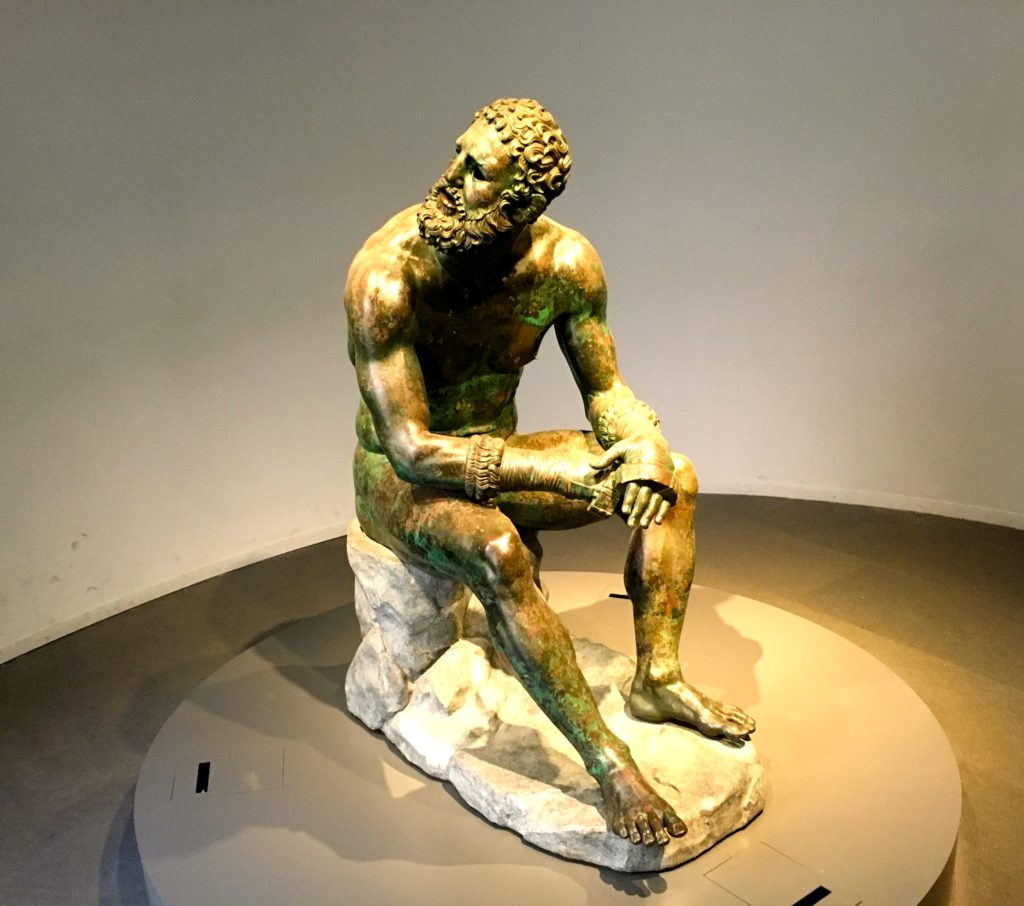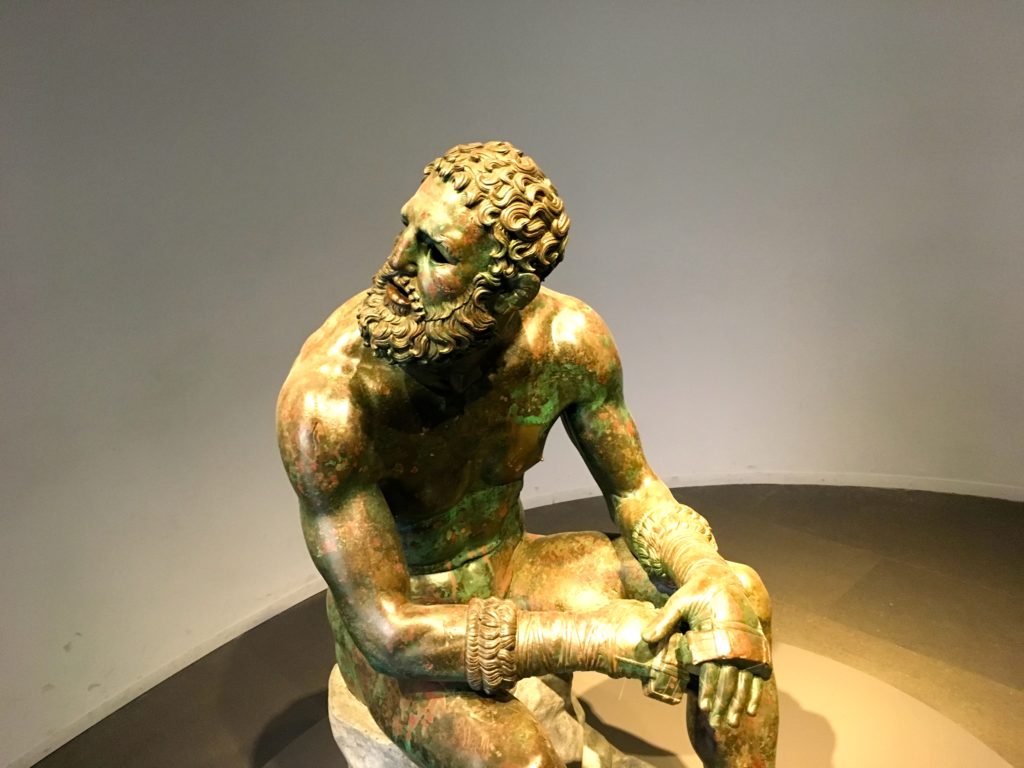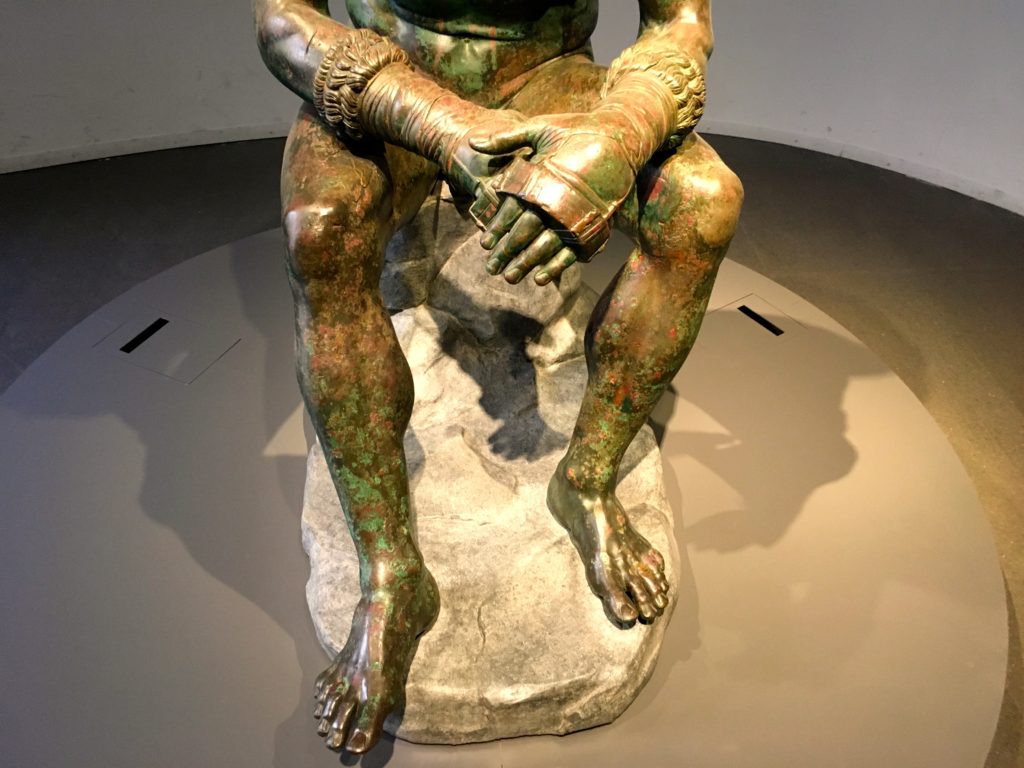The Boxer at Rest / Pugilatore in riposo
Boxing (in Antiquity) , was an ancient and revered sport in antiquity. Already practiced in the Bronze Age, it is recorded in the eighth century B.C. among the athletic contests performed during the funeral games of Patrokles in book 23 of Homer’s Iliad. It was introduced into the Olympic games in 688 B.C. and became an integral competition at all the major panhellenic sanctuaries where athletic events were held in connection with religious festivities. So popular was boxing among ancient Greek nobility, who valued it as a form of military training, that swollen ears became a mark of honor. In ancient Greece, the rules for boxing differ from those today. A boxer had to face one opponent after another, typically without significant pauses, and blows were dealt exclusively to the head and face. Originally, the gloves used to protect the hands were simple leather straps that covered the forearms. In the fourth century B.C., more complex gloves, such as those on this statue, featured a rigid ring with ox-hide straps around the fingers and were trimmed with fur so that the athlete could wipe himself. Later on, during the Roman Imperial period, the boxing gloves worn by gladiators developed into deadly weapons with sharp metal or broken glass points.

Pugilatore in riposo /
Terme Museum
Palazzo Massimo alla Terme
The boxer is portrayed in a moment of rest after a fight. Sitting with his legs apart and forearms resting on his thighs. He has relaxed shoulders and joined hends which are still wearing boxing gloves. The frontal sitting pose and relaxation of his body’s muscles are contrasted by a distinct rotation of his head to the right.

The figure conquers the surrounding space and directs the viewer’s attention to the fighter’s face. His gaze concentrated upwards and his slightly parted lips in a deep breath heighten the expressive intensity of his face, which is covered in scars, recent cuts and bruises, with drops of blood visible on his right arm and corresponding leg.


